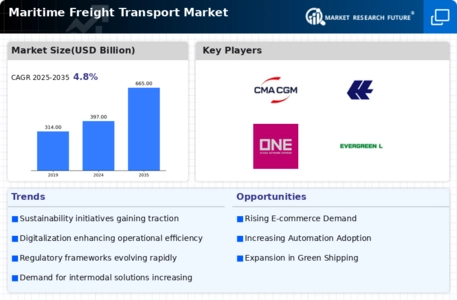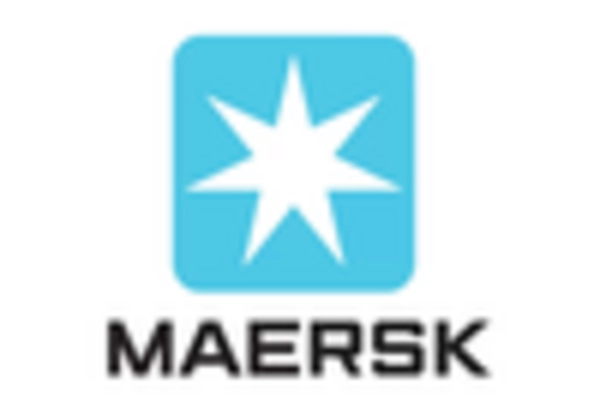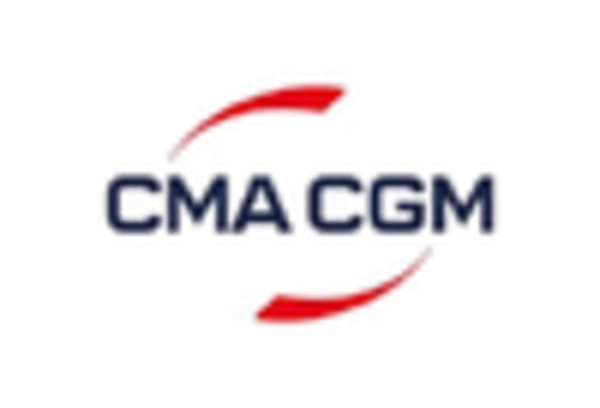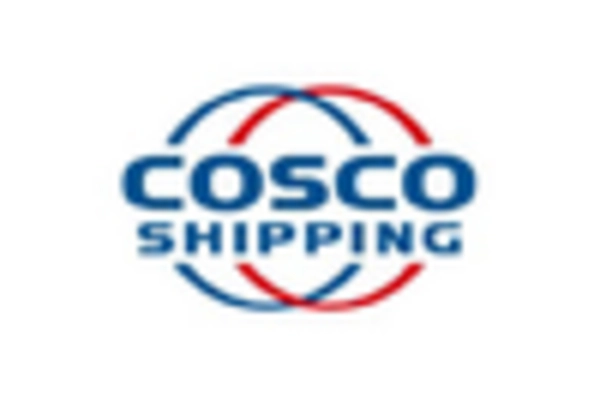Leading market players are investing heavily in the research and development in order to expand their product lines, which will help the Maritime Freight Transport Market grow even more. Market players are also undertaking various strategic activities to spread their footprint, with important market developments including mergers and acquisitions, higher investments, new product launches, contractual agreements, and collaboration with the other organizations. To expand and suatain in a more competitive and rising market climate, the Maritime Freight Transport industry must offer cost-effective items.
Manufacturing locally to minimize the operational costs is one of the key business tactics utilised by manufacturers in the Maritime Freight Transport industry to benefit the clients and grow the market sector. In recent years, the Maritime Freight Transport industry has offered some of the most significant advantages to the supply chain industry. Major players in the Maritime Freight Transport Market, including AP Moller (Maersk), China Ocean Shipping (Group) Company (COSCO), Mediterranean Shipping Company S.A. (MSC), CMA-CGM, Hapag-Lloyd, Ocean Network Express, Evergreen Line, HMM Co.
Ltd., Yang Ming Marine Transport, Zim, and others, are trying to raise market demand by investing in the research and development operations.
CMA CGM, founded in 1978 by Jacques Saadé, is a shipping and the logistics company headquartered in France. As one of the largest container shipping companies in the world, CMA CGM operates a vast fleet of vessels and provides comprehensive maritime and logistics services. With a strong presence in key international trade routes, the company offers container transportation, logistics solutions, and terminal operations across a wide range of industries. CMA CGM is known for its commitment to sustainability, investing in eco-friendly technologies and promoting environmental responsibility in the maritime industry.
Announced in August 2023, French shipping giant CMA CGM acquired Ingram Micro CLS, a US-based provider of contract logistics and freight forwarding services. This acquisition strengthens CMA CGM's presence in the US market and expands its logistics capabilities.
China COSCO Shipping Corporation Limited (COSCO) is one of the largest and most prominent maritime conglomerates in the world, headquartered in Shanghai, China. Formed through the merger of COSCO Group and China Shipping Group in 2016, the company operates across various segments of the shipping and logistics industry. COSCO is a major player in container shipping, owning and managing a vast fleet of container vessels that facilitate trade. With a comprehensive network of subsidiaries and affiliates, COSCO offers a wide range of services, including container terminal operations, logistics, and freight forwarding.
In April 2023, Chinese shipping and logistics company COSCO announced that it acquired a majority stake in HK Container Terminal, a leading container terminal operator in Hong Kong. This acquisition expands COSCO's port infrastructure and enhances its control over the freight flow.


















Leave a Comment